Zanzibar will always hold a special place in my heart.
This was the destination in which I chose to celebrate my 30th birthday. I could have picked anywhere in the world and yet, there was something about Zanzibar that called to me.
This paradise island has been a destination for spice traders for years and it’s resulted in a smorgasbord of cultures as vibrant as the nearby coral reefs.
On land, there’s influences from multiple angles, from Portuguese colonial architecture to Omani imperialism. It plays out in the local markets, which serve up authentic treats from around the globe — and yes, they’re jam-packed full of spices.
But while historic Stone Town and the charming fishing villages are all about the architecture and culture, it’s the white sand beaches and endless blue ocean that will linger in your memory.
It was all of that that led me to visit Zanzibar: the food, the spices, the culture, the beaches, the markets, and more. I loved it.
Zanzibar has so much to offer its visitors and you could spend weeks here without getting bored. Today, I’m excited to be sharing all of my favourite things.
Explore Stone Town
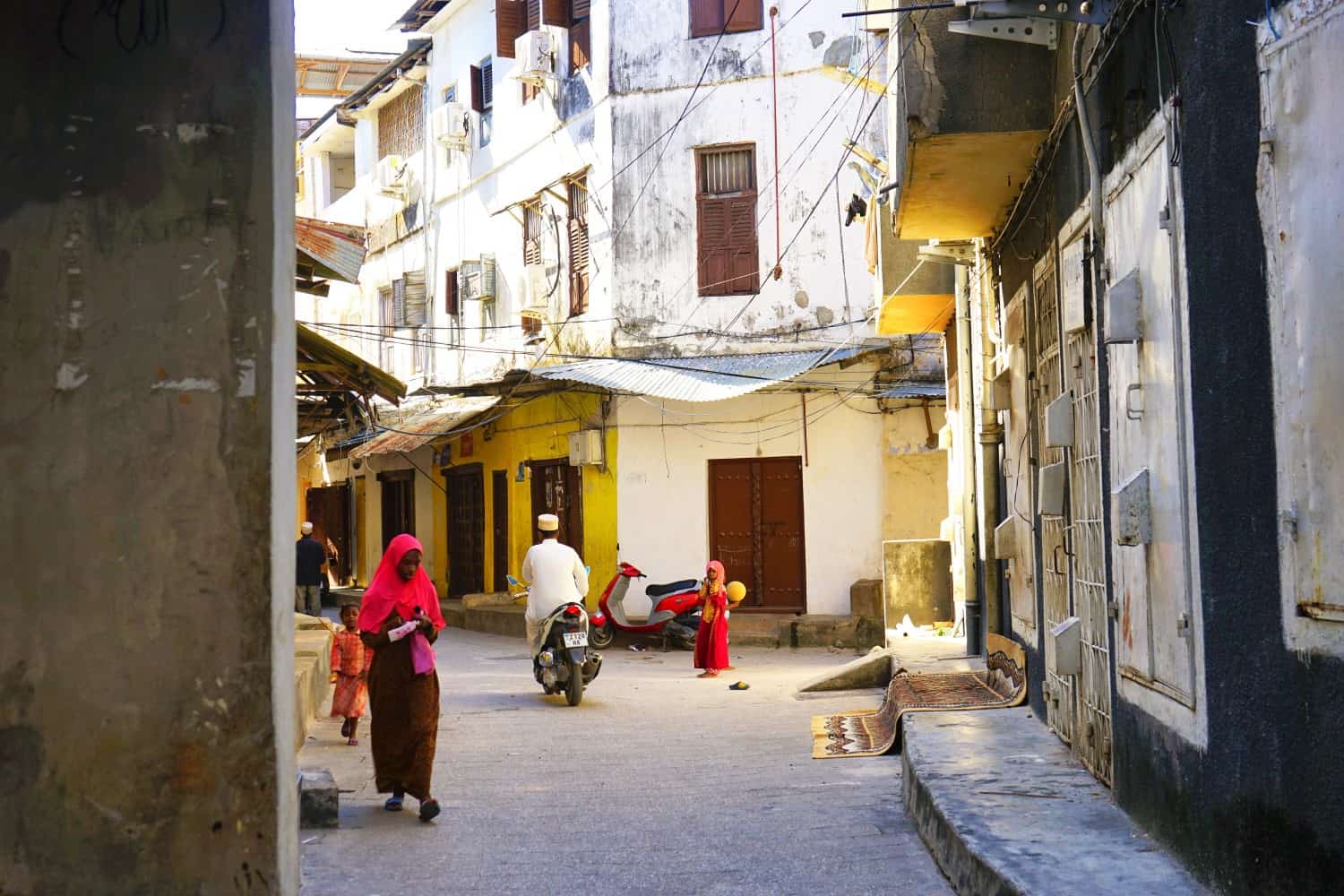
Zanzibar’s history goes back over 20,000 years. It’s vast and rich. But the most tangible part of its history began with explorers and traders, who journeyed between East Africa, the Middle East and the Indian subcontinent. The best example of this is within Zanzibar’s Stone Town.
Stone Town makes up the western tip of the island. Its sheltered location quickly turned it from a humble fishing village to a prominent trading post. Its merchant history has led Stone Town to have an abundance of cultural influences that connect to many parts of the Indian Ocean and Europe.
Over time, a vast range of diverse buildings dotted the town, offering a mix of African, colonial and Arabic designs. It’s a major reason Stone Stone became a UNESCO World Heritage Site in 2000.
After arriving in Stone Town, get about on foot and explore the maze of narrow streets that leads to surprises around every corner. With many historic buildings slowly fading, it brings a whole other meaning to Stone Town. Complete the experience by spending time at Zanzibar’s national museum, the House of Wonders and the Arab Fort.
Go Scuba Diving
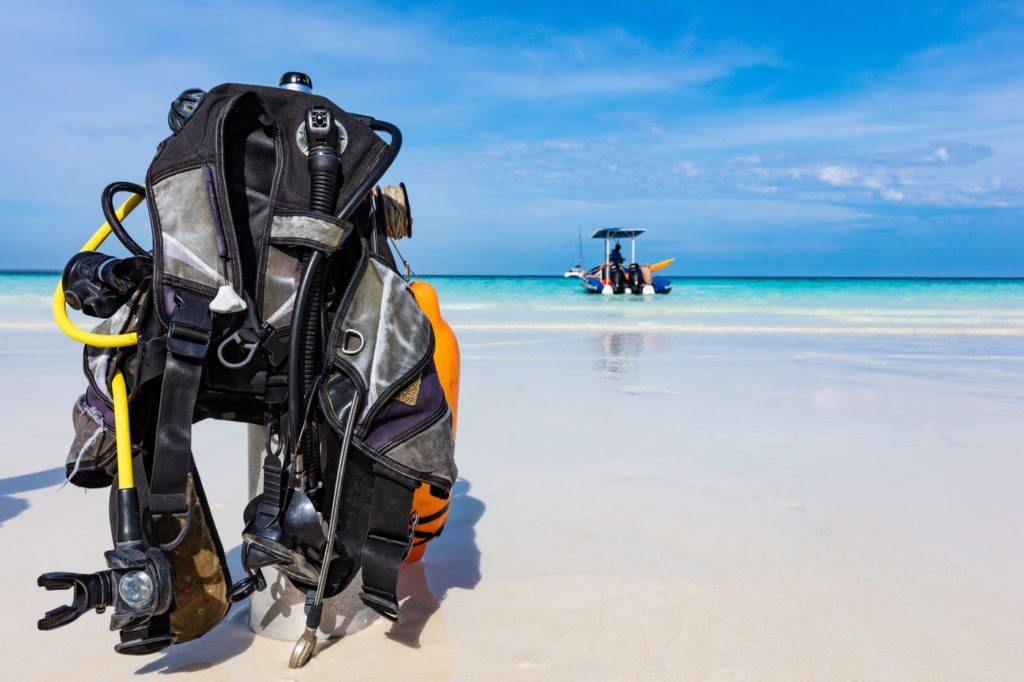
With its position slightly south of the Equator, the balmy, clear and calm waters surrounding Zanzibar make for the perfect scuba diving destination. This place is paradise, both above and below the water, with the sparkling turquoise ocean leading to vibrant corals and schools of tropical fish.
If you’re short on time, then the hardest part will be narrowing down where to dive! You could easily spend a whole week just venturing between all of the popular spots and still be left wanting more. With that being said, let’s explore two of the best scuba diving spots around Zanzibar.
The Mnemba Island Atoll is a marine conservation area that surrounds Mnemba Island. An atoll is essentially a barrier reef that forms a ring around an island, providing a natural lagoon. It makes for exceptional snorkeling and scuba diving with kaleidoscopic colors rivaled only by the prismatic fish. As you dive, keep an eye out for moray eels, seahorses and green turtles.
For something closer, check out Paje Beach, whose translucent water creates an underwater playground where you cans swim among turtles, starfish and eels without jumping on a boat.
Have a beach day at Nungwi Beach
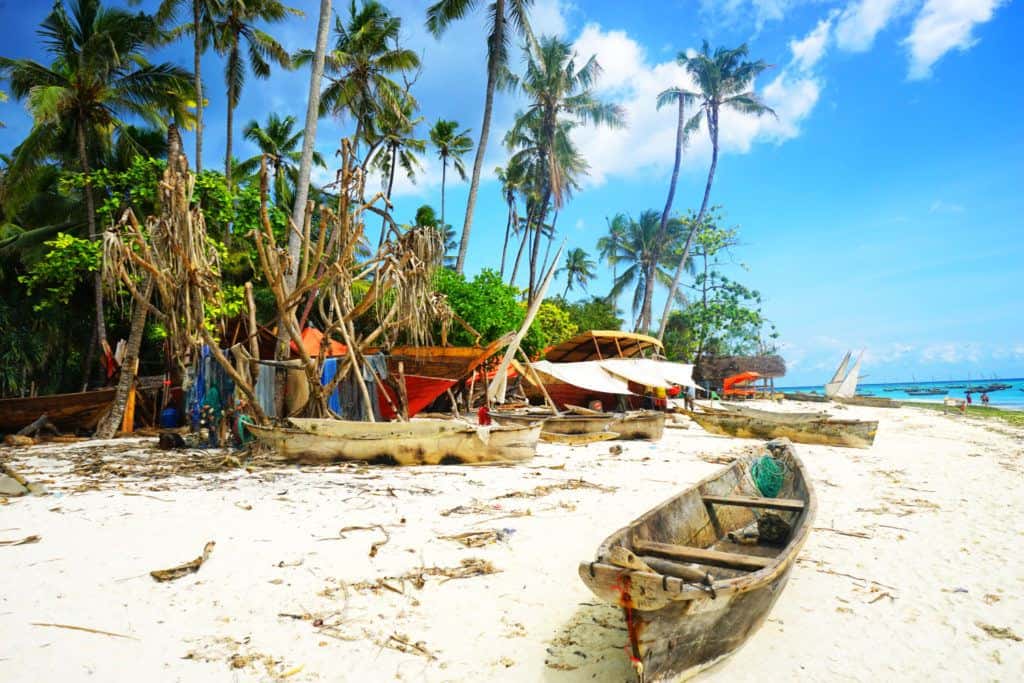
On Zanzibar’s northwest coast, you’ll discover the charming village of Nungwi. The town has long been a beloved destination among adventure travelers who have fallen in love with the town’s quaint personality and proximity to snow white sand.
Nungwi Beach has previously been rated as one of the best beaches in the world. While the atmosphere has changed somewhat from its idyllic beginnings, it remains at the forefront of Zanzibar’s paradisaical personality.
The sand is as soft as a marshmallow and leads to the island’s patented blue sea. The water stays shallow for a great distance, allowing you to walk out, sit down on the sand and watch the world go by.
Nungwi continues to be the heart of shipbuilding on the island. It’s one aspect that makes the surrounding village a delight to explore. From your spot on the sand, you’ll likely see traditional dhow boats come and go. You can learn all about the town’s boat building heritage, visit the beach and even join a sunset cruise on this Nungwi experience.
Sail a Dhow
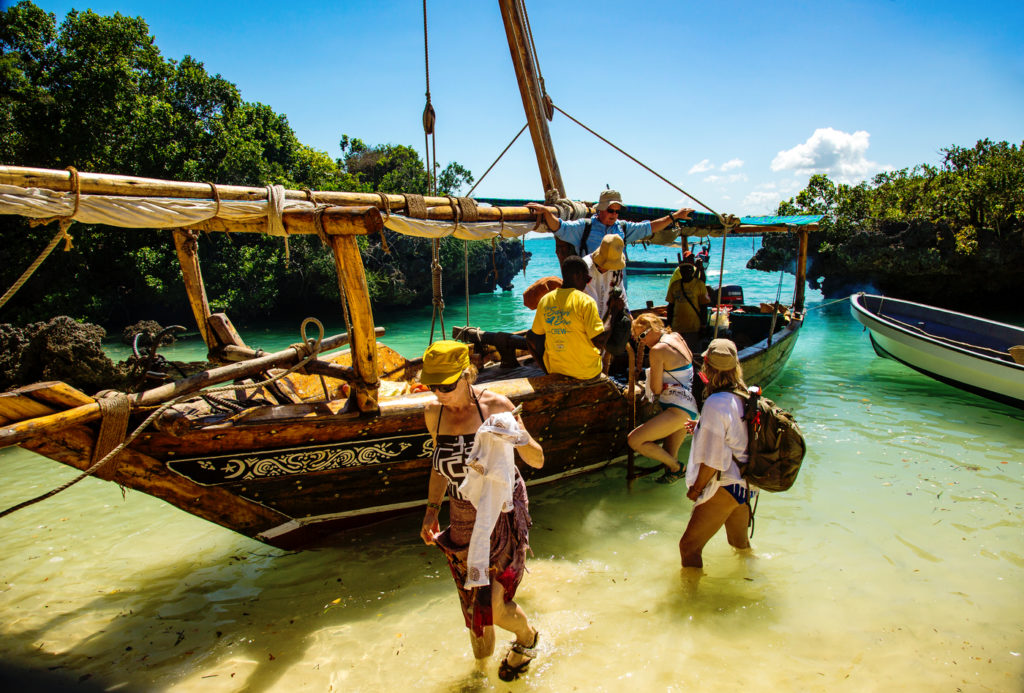
A dhow is a sailing vessel that has been a part of the Indian Ocean and Red Sea for centuries. History suggests it all began in China before spreading westward, but today the building of dhows is mostly restricted to East Africa. As you travel around the region, you’ll have several opportunities, including in Mozambique. But who could pass up a dhow trip around the waters of Zanzibar?
If you’re up early, you’ll see the local crafts coming in from their morning fish, ready to stock the local markets with fresh produce. Many of the dhows also remain available for tours, private charters and the aforementioned sunset cruise.
Boats depart from most of the major towns around Zanzibar throughout the day. Each will have something different to offer, from a party experience where the booze flows like Victoria Falls to a beach hopping journey. But if you’re traveling with your partner, enjoy this private cruise, that takes you to multiple islands, with wine, lunch and snorkeling included.
Visit Prison Island
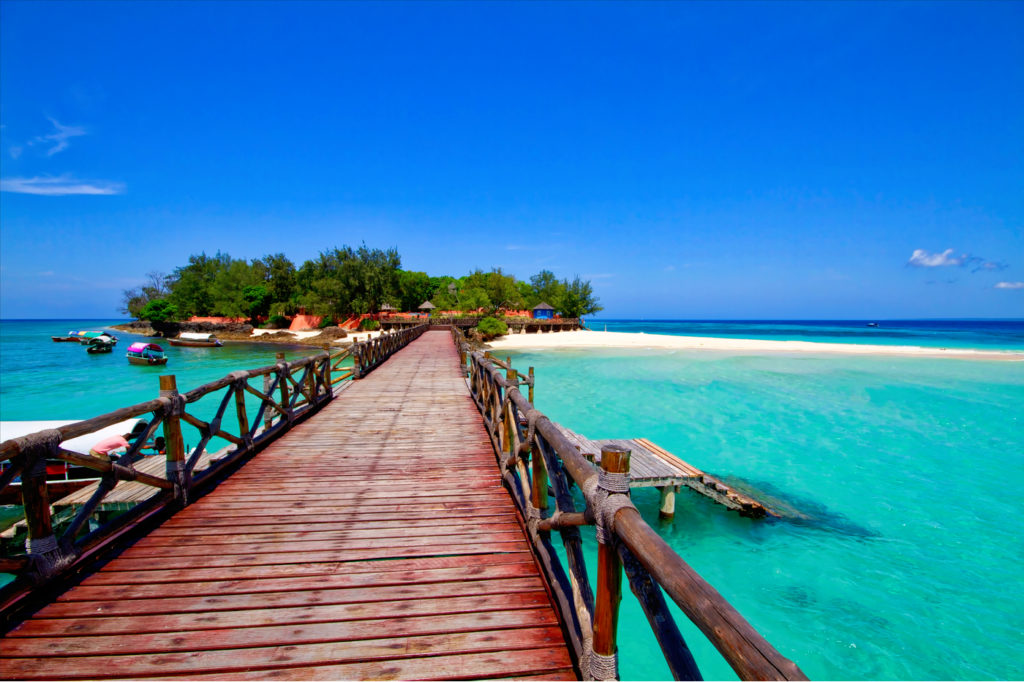
Otherwise known as Changgu, Prison Island is a beloved destination among beach bums. The small island is almost entirely dense forests encased in white sand. It’s minutes on boat away from Stone Town, making it the perfect day trip.
Along with effervescent water and coral that can be seen from your spot on the beach, you’ll find dozens of giant turtles. These majestic creatures were brought to the island by Seychelles. There are estimates that some of the turtles are over 150 years old.
Admire them from afar while as you explore the entirety of the island before spending plenty of time cooling off in the baby blue water. Such is the tranquility that it’s hard to fathom how the island got its unofficial name. It was here in the 1800s that escaped slaves were brought after being recaptured.
Explore the history of Stone Town before jetting over to Prison Island on this day trip.
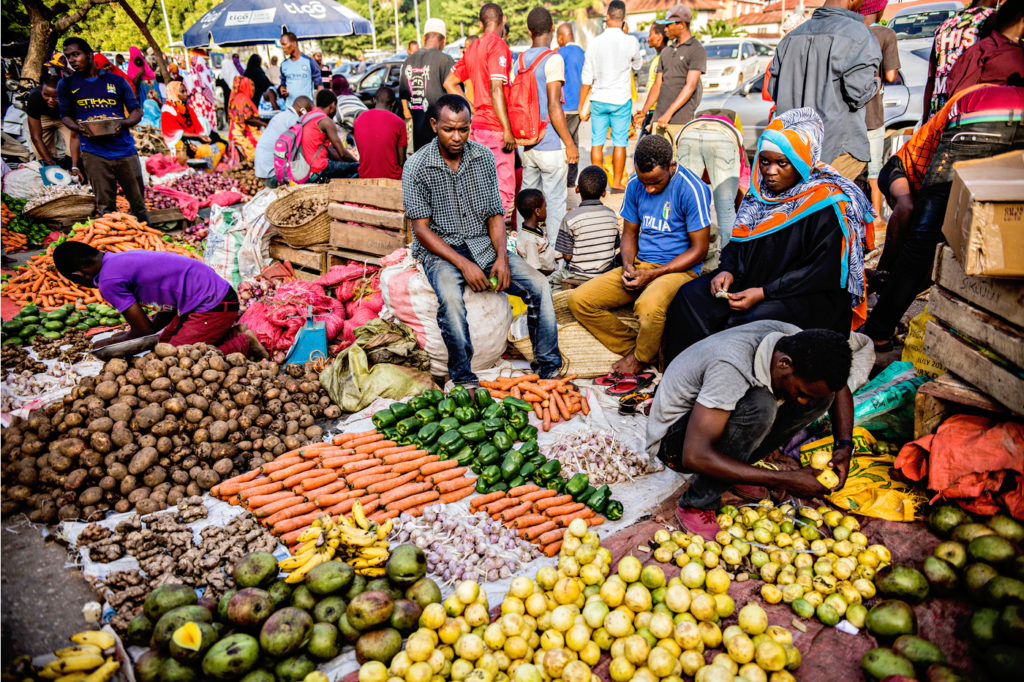
Check out the Darajani Market
Zanzibar has a long history of trade, especially with spices such as pepper, cinnamon, and cloves. The tradition continues on to this day through the many local markets. The best of them is the Darajani Market.
This bazaar was established in 1904 and is the centerpiece of Stone Town. You’ll spend so much time relaxing and swimming that you’ll can easily forget about the bustle within the historic heart of Zanzibar. So take a deep breath before venturing into the lion’s den.
The Darajani Market covers all bases. You can find tech replacements, sim cards and phones alongside home decor and cooking tools. But most appropriate for the wandering traveler is the produce. The market has no shortage of spices, fresh baked goods, meat and vegetables. The most thrilling time to go is early in the morning when the market holds its boisterous fish auction.
Walk up and down the aisles, interacting where you can. You’ll also find plenty of surrounding street carts to keep you well fed throughout.
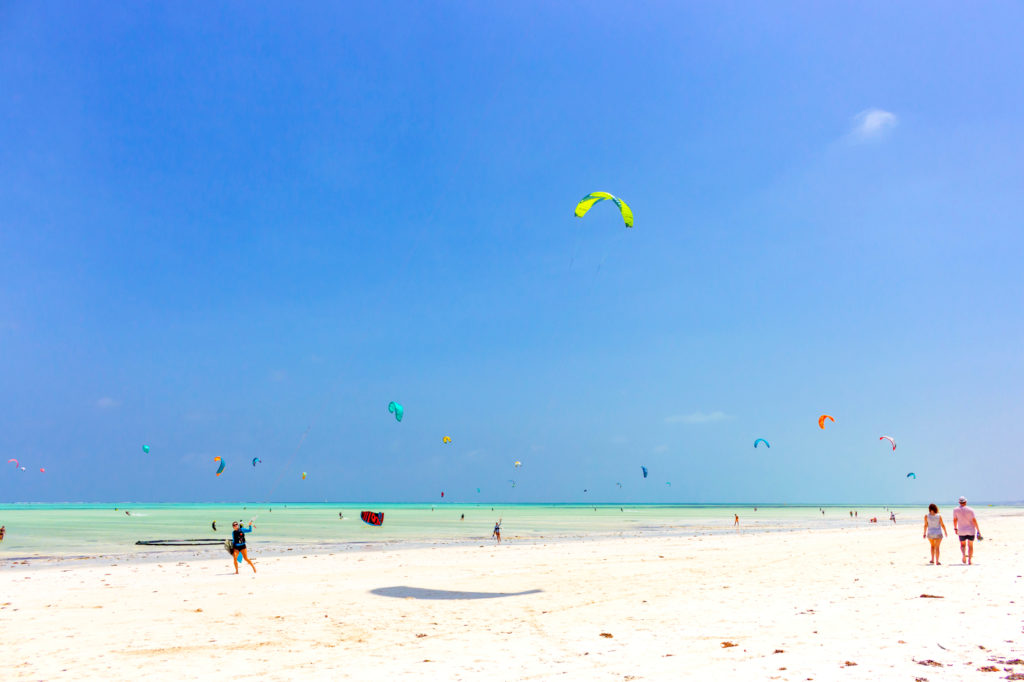
Kitesurf at Paje Beach
Split between the villages of Bwejuu and Jambiani, Paje Beach is a kitesurfing haven. The beach is on the island’s southeast coast and, despite also offering exceptional scuba diving, remains much quieter than the popular northern beaches. That means more room for you, as you try to get a hang of this kitesurfing thing.
The beach has an outer reef that provides a natural lagoon. This helps to mitigate swell, allowing for beginners to get up to speed without the constant threat of barreling waves. In addition to the calm conditions, you can rely on their being a handy side wide throughout the year, providing the perfect conditions for you to zip along the beach and back again.
Beyond the sand, you’ll find plenty of schools and rental shops that cater to all skill levels. Paje Beach’s active personality flows onto the nearby streets, which features a lively backpacker atmosphere and some chill beachside bars.
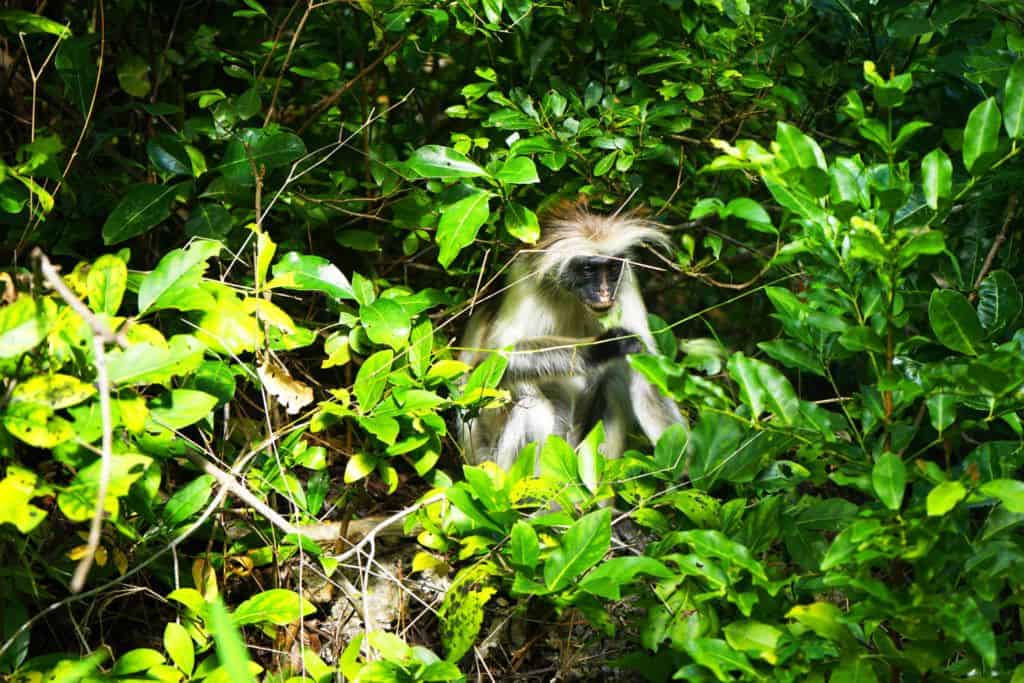
Explore Jozani National Park
A brief trip from Paje Beach is the beautiful Jozani National Park. Despite Zanzibar being 45% national park, only one of those is actually on land, making Jozani a must visit. Away from the dazzling coral and marine life, explore the other side of Zanzibar’s natural paradise.
The national park is open from 7.30am to 5.00pm daily and includes a small entrance fee. The price of admission also comes with a quick guided tour that helps you understand the lush forest, home to fluttering birds and a community of monkeys.
After the tour, you can explore the park along an elevated boardwalk that takes you through the forests into mangrove habitat. Along the way, keep your eye out for the rare red colobus monkey. Not because they’re hard to spot, but because they aren’t shy and may give you a fright as they swing along the path.
If you’re heading to Paje Beach, consider exploring Jozani National Park beforehand to avoid the park’s midday foot traffic.
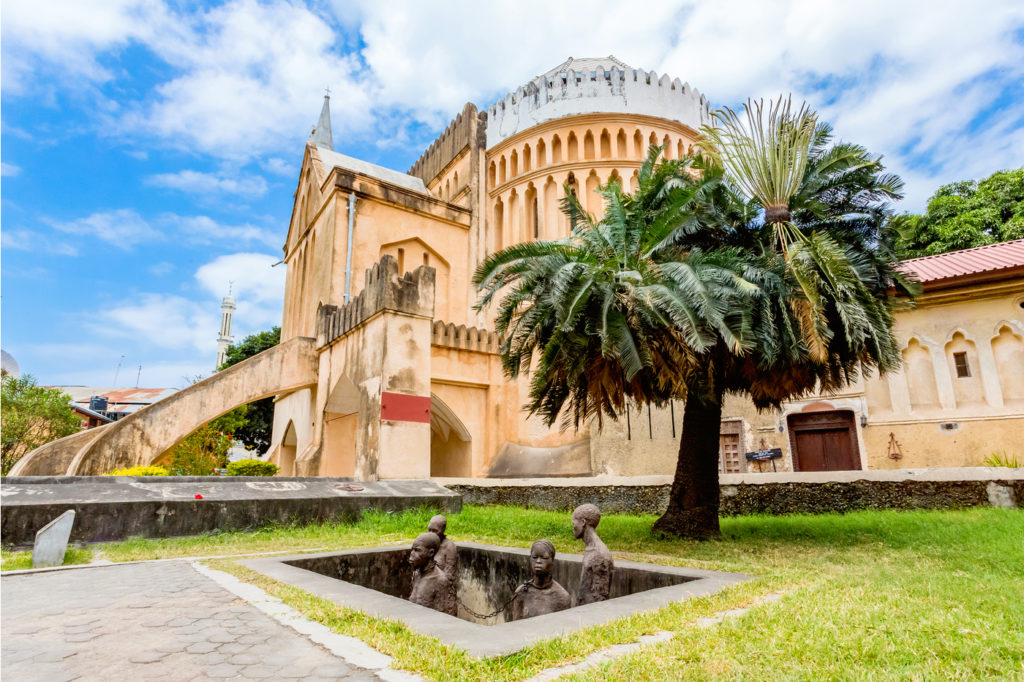
Visit the Old Slave Market
The qualities that led to Zanzibar becoming such a prominent part of the spice trade are the same reasons the island played such a prominent role in the Slave Trade. In Bagamoyo, on mainland Tanzania, thousands of slaves were trafficked, sent to Zanzibar before being sold. From there, slaves were sent to Europe, Egypt and the Middle East.
At the heart of this was the Slave Market. It was the last permanent slave market in East Africa when it closed in 1873. It is certainly a somber site and greatly contrasts to the vibrant community and beautiful scenery. But the market and the slave trade is a key reason for the island’s diversity, both in people, cuisine and architecture.
The market is now a part of the museum. Visitors can tour the chambers that held the slaves in the lead up to their auction. The room comprised a 12 by 12 foot (3.6mx3.6m) basement that could cram in up to 30 people. Afterwards, pay a visit to the David Livingstone home, a man who was a vital figure in Zanzibar stopping to slave trade.
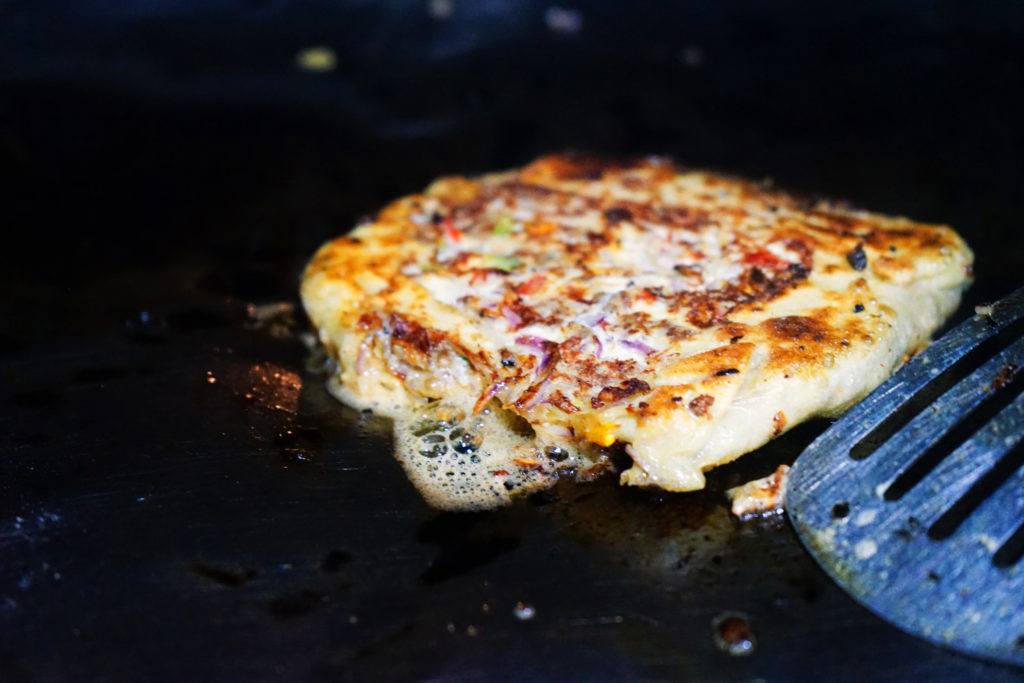
Peruse the Night Market
There’s no shortage of great street food on Zanzibar’s main island. But for a congregation of street carts and vendors, get along to Forodhani Gardens. The market is close to the Darajani Market within Stone Town. While mostly brick pavement and trees, the gardens come to life at sunset, presenting the best Night Market in Zanzibar.
The gardens are right by the water, offering beautiful views as you wander. You’ll find every kind of local food on offer in one helpful spot, making it an easy way to experience Zanzibar cuisine. With the falling sun painting the sky with pinks and reds, explore the entire market seeing which dish takes your fancy. As always, with markets and food carts, a line is your friend.
Some of the popular eats in Forodhani Park showcase the island’s range of culinary influence. You could easily find samosas, kebabs, and pizzas lined up alongside each other. The pizza is the most intriguing, as Zanzibar pizza is essentially a thin pancake with every topping option under the sun.
You can choose between a range of sweets, chocolate and fruit for a dessert “pizza” or go for the savory option to create your classic slice. Either way, wash it down with some fresh sugarcane juice.
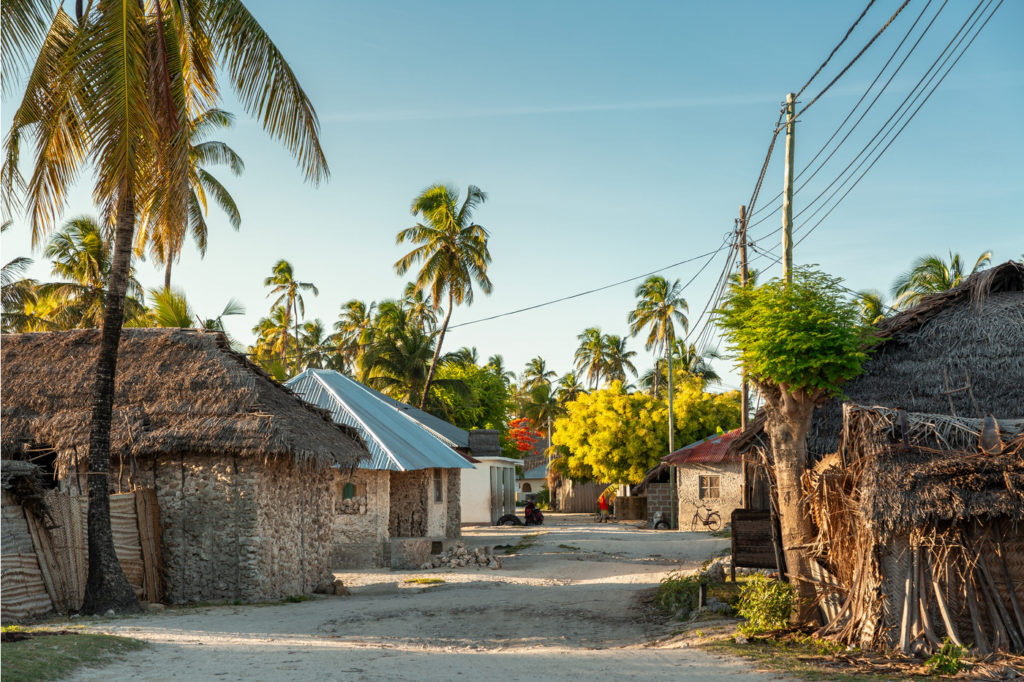
Head to Jambiani
On the east coast, Jambiani is a delightful fishing village that has been affected little by the winds of change. Alongside Nungwi, it’s one of the villages you must visit during your Zanzibar experience. The low-key village offers a window into the life of Zanzibar without resorts and tourism. When the sun rises, locals return in dugout canoes full of fish and the kids wake early to play football on the sand.
As you walk around town, you’ll discover the traditional thatch roof and coral stone homes where friendly locals smile and wave as you go by. Authentic life continues on as always, providing a great example of the powers of sustainable travel.
By yourself, one on a guided tour, explore the small coastal town watching the fishermen go to work before seeing Jambiani’s herb and seaweed farms. At the height of day, locals play cards under the shady trees and the village goes quiet. As it cools off, town life picks up again.
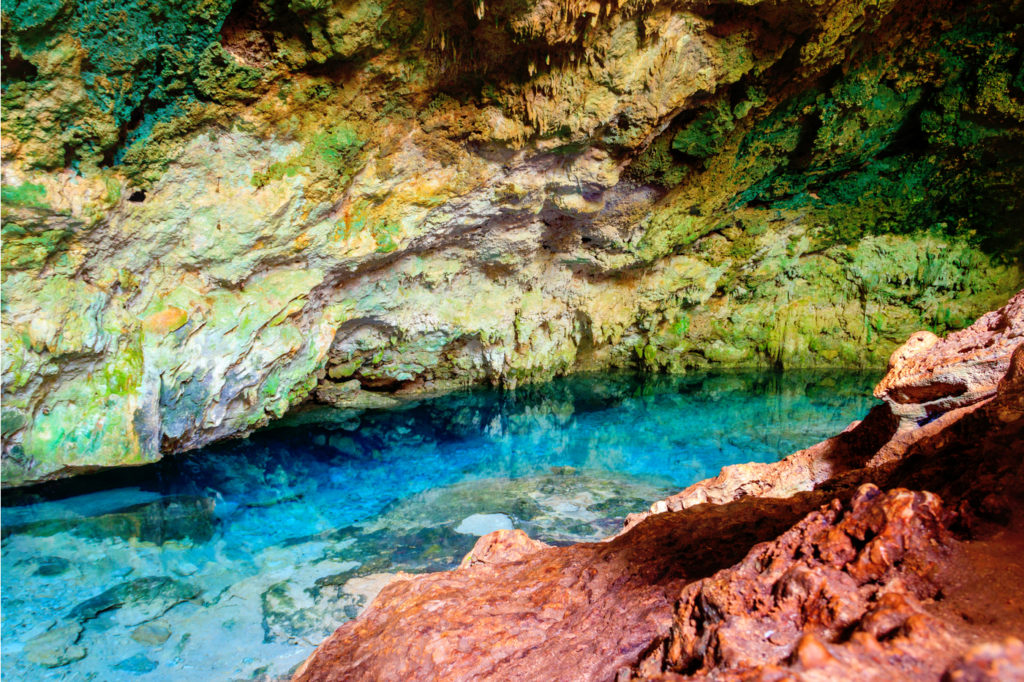
Swim in a Cave
With all the stunning beaches and off shore diving to enjoy around Zanzibar, it’s easy to overlook this underrated gem. In Jambiani, you’ll be a quick walk away from Kuza Caves, which also features a cultural center.
While not free (10 USD), your visit will include a guide who will take you down to the cave, explaining the history of this natural wonder as you walk. A brief trail snakes through a dense jungle before arriving at the opening.
The caves were formed as a result of a major earthquake that caused the rocks beneath the surface to fall. This opened a large space that’s now filled with crystal clear water. For centuries, it was a major part of local spirituality, ceremonies were held and the water was known to grant wishes.
The part of local culture has fallen by the wayside, but the cave has lost none of its magical aura. The refreshing turquoise water contrasts with the dark cave walls, creating mysterious lighting effects. You can easily spend a few hours enjoying the revitalizing water before heading up to the cultural center. Here, you can take cooking classes, watch locals make handicrafts and listen to live music.
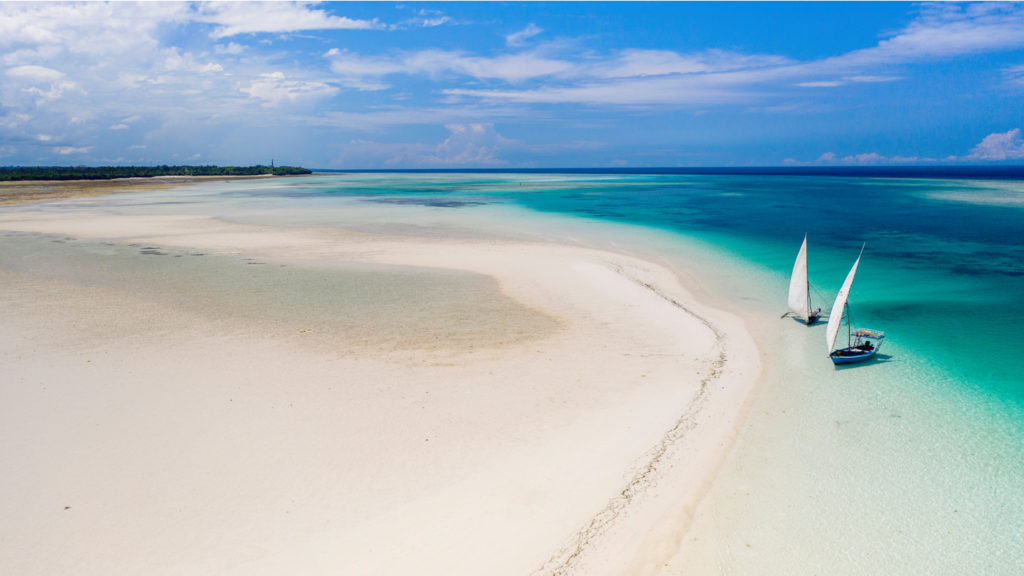
Take a Trip to Pemba
30 miles (50km) northeast of Zanzibar is the tranquil island of Pemba. Having seen little tourism development, the island has long stretches of untamed coastline, picturesque fishing villages and ruins from long gone eras. Accommodation is limited, however, if getting off the proverbial map is the goal, you can do a lot worse.
There is one resort that’s worth shelling out for, and that’s the island iconic Manta Resort. This hotel floats out on the deep blue ocean, allowing you to literally dive from your living room. There is even a basement that is under the water where you can sleep alongside tropical fish.
Resort aside, being so close to impeccable reefs, Pemba is most known for its spectacular diving. The area is a part of the Pemba Channel Conservation Area, where you’ll explore a marine world home to 300 unique species and vast coral gardens. You’ll enjoy visibility of up to 130 feet (40m) with some of the best sites being Manta Point, the Fundu Reef and Njao Gap.
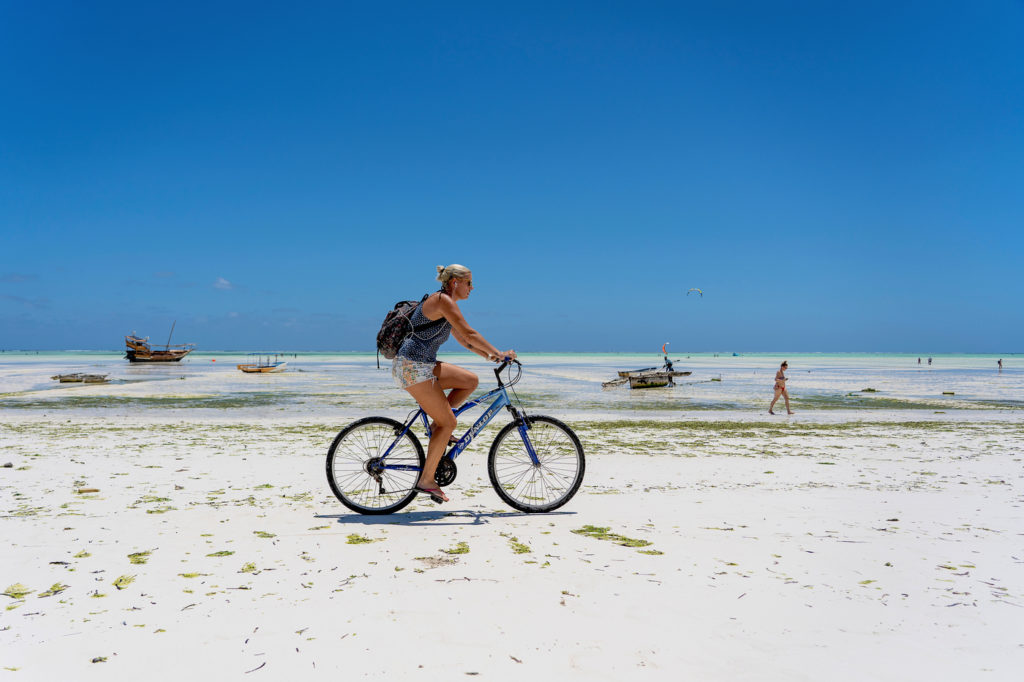
Go for a Bike Ride
Making your way around the island on local transport is always exciting and chaotic. But in the rush of movement, the experience becomes all about the destination. To slow things down a bit and see the island at your own pace, ditch vans and scooters and hire a bicycle.
While you could attempt to ride around the entire island in a day, it’s best suited to smaller trips that bite off decent chunks of the beautiful island. A popular route takes you south from the fishing village of Nungwi to Matemwe on the east coast. Ride by ancient Portuguese ruins from the 1500s, blacksmiths and boatbuilding sites, with the chance to stop by a coastal cave filled with coral.
Upon arriving at Matemwe, you’ll find yourself in a place that’s even more slow-paced that Nungwi. Ride along the coast, watching the blue and white waves crash down on the powdery sand. In town, is also another cave that played a role in early communities. The Kiwenga Caves are filled with crystallized stalactites, where locals would come and worship.
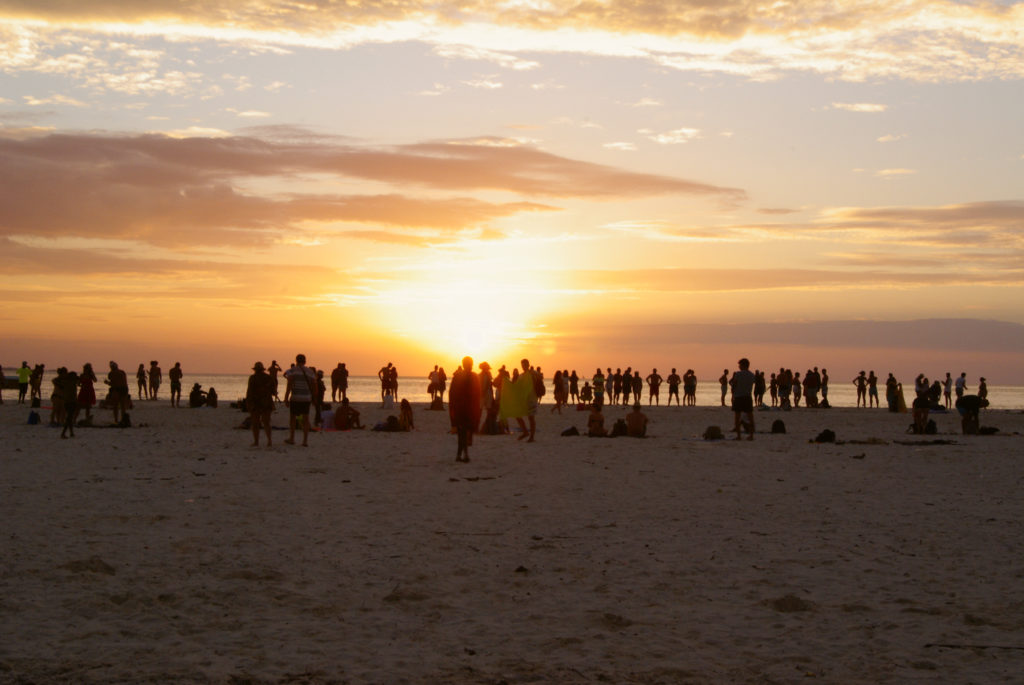
Watch a Sunset at Kendwa Beach
Around the corner from Nungwi, on the northwest coast, is one of the best beaches in Zanzibar. Where other beaches around the island have large tides that expose the beach’s rocky surface, Kendwa Beach comes with a minimal change of tides. Meaning it’s picture perfect all day long.
The wide open beach is backed by several resorts, ensuring the golden sand remains clean. With so much space, you also won’t have issue finding your own patch of sand on those busier days. The swimming is calm and colorful with ample opportunity to spot colorful starfish.
But it’s the sunsets at Kendwa Beach that are the real highlight. Facing due west, you’ll enjoy an uninhibited golden hour. The resort and local bars have tapped into the spectacular views and create a fun party atmosphere that then extends into the nightlife around the area.
Once a month the hotel, Kenwa Rocks, hosts a full moon party. But sans buckets full of booze and glow sticks, it’s one party you can enjoy without canceling tomorrow’s plans. Mingle with fellow travelers and resident with local beats floating through the air.
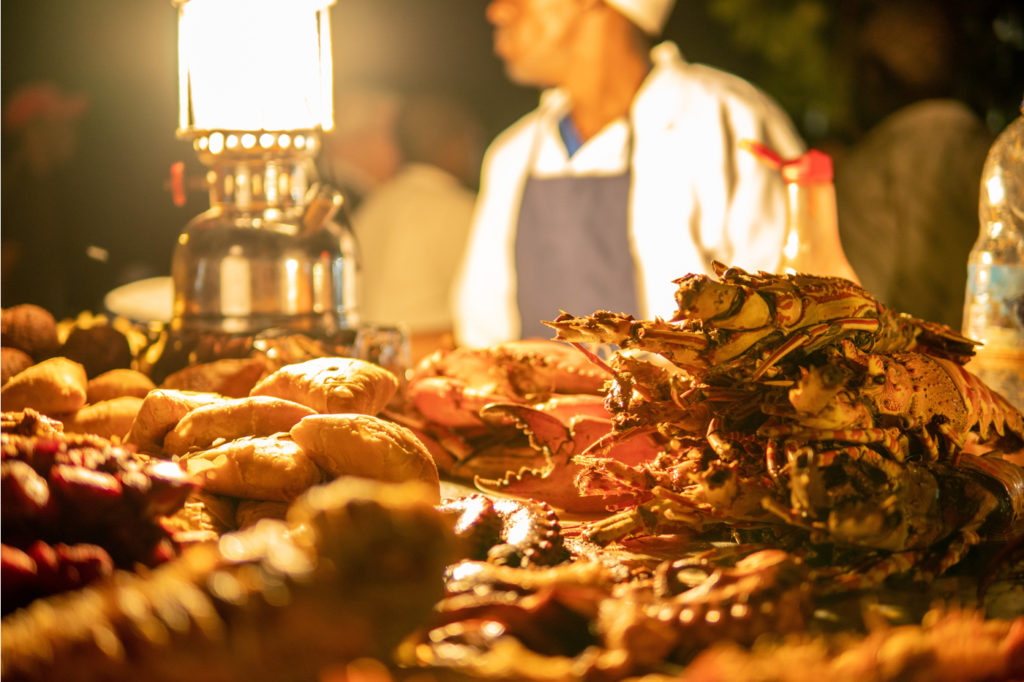
Enjoy the Nightlife
Following up on the Full Moon Party, Zanzibar has a wide-ranging nightlife that extends from popular sundowners to happening dance clubs. An evening on the island can be as relaxed or adventurous as you like.
Sunsets never get old and Zanzibar sure knows how to throw an unforgettable golden hour. The island has a strong sundowner culture, where everyone heads to their local bar with a view, grabs a drink and enjoys the show. Some of the best places to take in the sunset with a cocktail in hand is Africa House Hotel. The historic colonial building offers amazing views, so get in early to grab a front-row seat. Other options include 6 Degrees South and Gerry’s Bar.
Stone Town lies at the heart of the island’s most raucous nightlife. There is a strong concentration of bars and clubs that allow you to be social or dance all night long. The Garage Club offers international DJs that will get your hips moving.
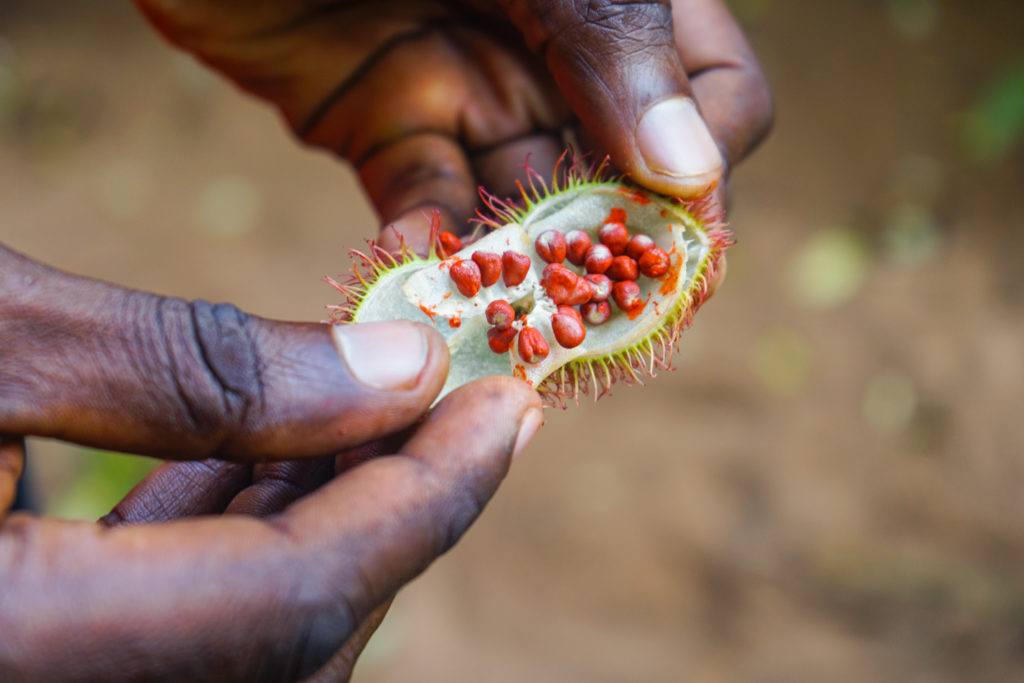
Join a Spice Tour
When it comes time to leave Zanzibar, high up on the memory shelf alongside the sunset cruises and scuba diving, will be the spice tour. There’s an abundance of these tours that will explore what was once the center of the spice trade.
Beyond the tales from past eras, the most insightful aspect of the experience will be learning about how spices are created. Most produce is self explanatory, but with spices there’s a layer of mystery. Many tours will begin with a visit to a local farm that will showcase the many fruits and spices grown on the island, complete with a tasting.
With such fertile soil, there’s plenty of these farms on Zanzibar. Most congregate on the outskirts of Stone Town within the Masingini Forest. The farms are set up to encourage tourism, with a front section growing all sorts of plants in close proximity. Don’t be surprised if the farm grows around 50 different kinds of spices to go along with dozens of fruit.
Experience all that and more with this spice tour departing from Stone Town.
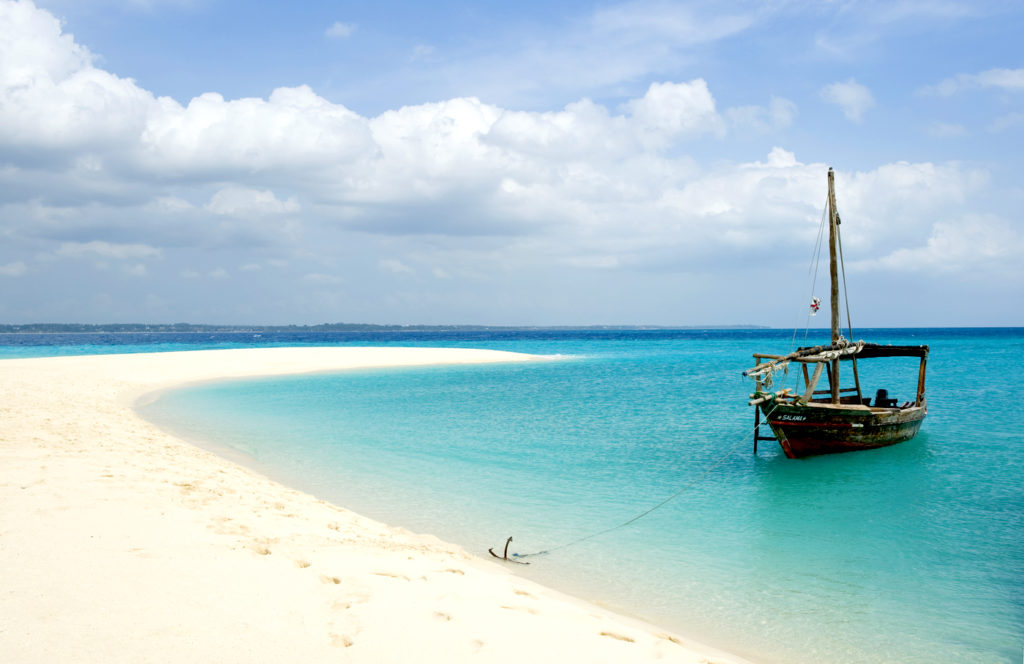
Sunbathe at Bwejuu Beach
There’s no end to the magical beaches around Zanzibar, but the last of the one in our guide is the wondrous Bwejuu Beach. Near Paje Beach and an hour from Stone Town, Bwejuu is as peaceful as it is stunning.
The beach is within one of the quietest parts of the island and its wide expanse of cloud white sand will provide you with ample privacy. Looking down the coast, the sand acts like a bridge between the endless rows of swaying palm trees and the electric blue ocean.
From the moment you step onto the beach, you’ll feel at ease. Dhow boats rock back and forth on the water’s surface and snorkel gear bobs up and down. It’s a great place to come and waste a day swimming, sunbathing and reading. A block back from the beach are bars and restaurants for when you’re peckish, along with the cozy village of Bwejuu.
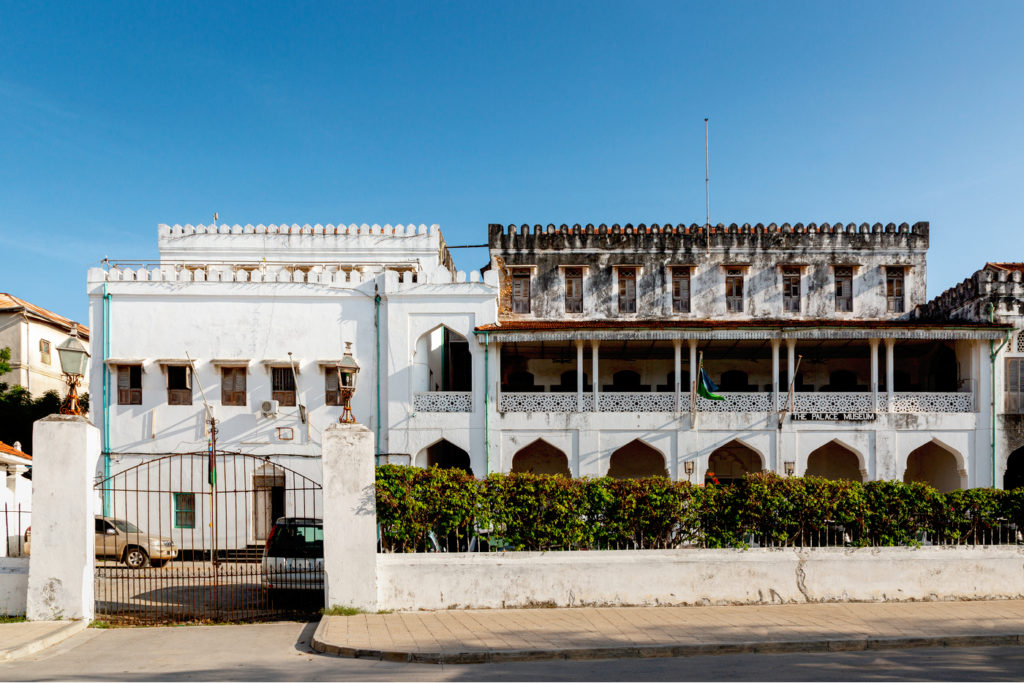
Visit the Palace Museum
The Palace Museum was originally the home of Sultan Seyyid Said. The palace was occupied right up to the day of the 1964 revolution, which overthrew the Sultan and led to Zanzibar becoming a part of Tanzania.
The palace is within Stone Town and is a beguiling site. The sprawling castellated complex is right on the waterfront between the House of Wonders and the historic Old Dispensary. It was built towards the end of the 1800s, on the site of the previously destroyed Bait As-Sahel Palace.
Shortly after the Zanzibar Revolution, the palace became a parliamentary seat and remained as such for 30 years. In 1994, the palace was transformed into a museum that explores the country’s royal past. Learn about sultans and princesses, check out their period furniture, clothing and relics relating to their powerful lives.
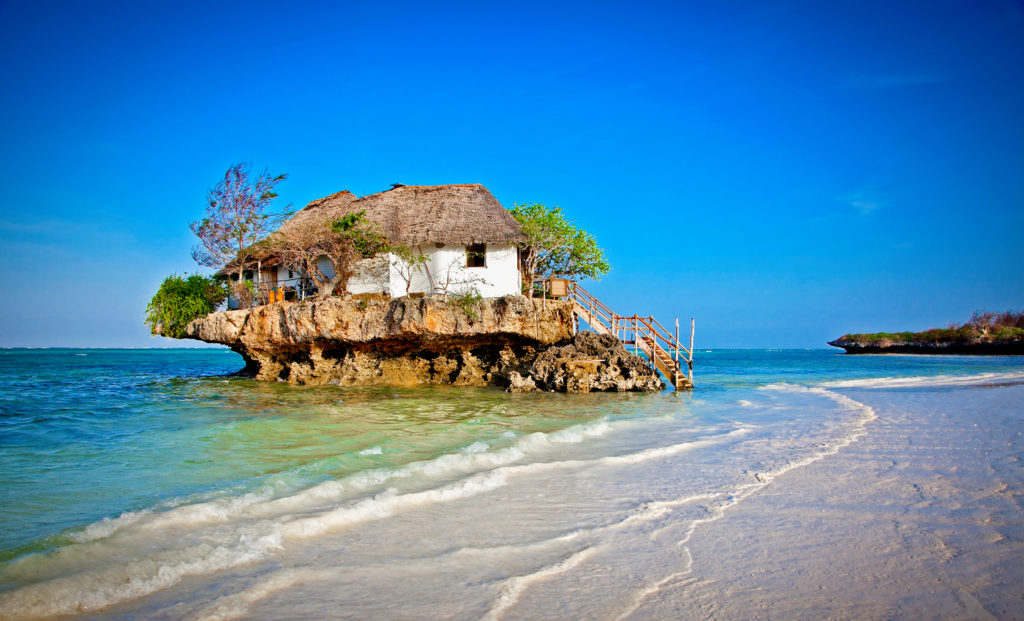
Have Dinner at The Rock Restaurant
The Rock restaurant is one of the most interesting places to eat in Zanzibar. The fascinating restaurant is set upon a rock and, at high tide, it becomes an island just off the shore. You’ll find the restaurant on the southeast coast, not far from some of the island’s best beaches.
The rock which holds up the restaurant rises out of the sand and sea, curling to each side. This provides the platform on which trees grow and delicious food is served. The Rock Restaurant specializes in amazing seafood and you can’t put a price on the captivating views.
If you’re seeking a place to wine and dine your partner, then you won’t find a better place.
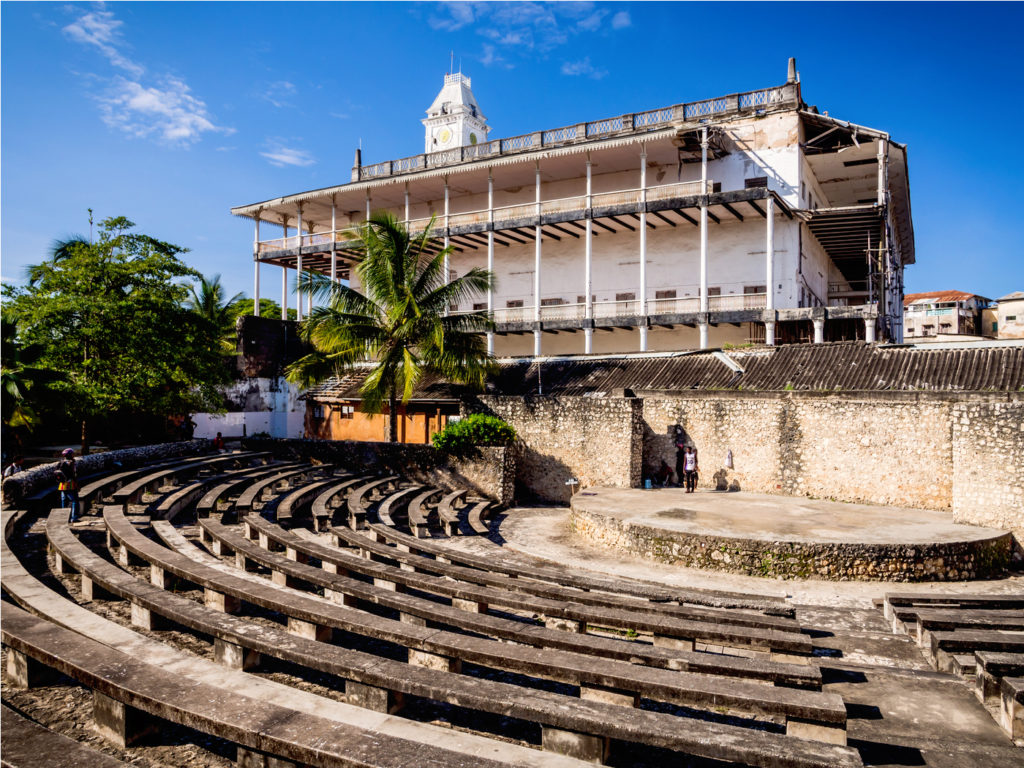
Catch a Show at the Arab Fort
On your leisurely strolls around Stone Town, you will have come across the historic Arab Fort. The fort was built by Omani Arabs in the 1600s, shortly after they defeated the Portuguese and took control of the island. It then became an important part of their defense system, with several battlements.
The fort would go on to wear many hates over the following four centuries, including as a gruesome prison, a railway depot and even as a tennis club for local women. After the revolution, it ceased to be used. But alongside the palace, it found new life in the 1990s with a part of it becoming home to an open-air theater.
The amphitheater makes use of the fort’s beauty and integrates well into the original design. The Arab Fort now holds regular events from traditional to modern music, plays and dance along with the Zanzibar International Film Festival, the largest in East Africa.
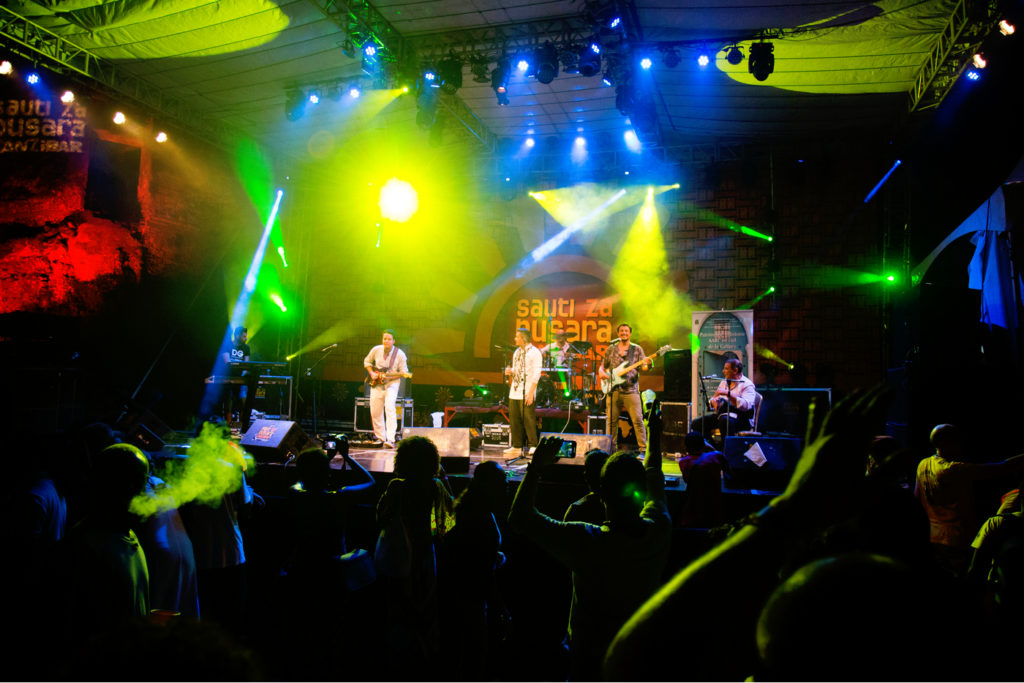
Experience the Festivals
Speaking of the film festival, Zanzibar plays host to three major events every year. The other two are the Sauti za Busara and the Zanzibar Beach and Watersports Festival.
Sauti za Busara takes place every year in February and is a lively music festival. The event occurs in Stone Town and celebrates music from all over Africa. It’s held over multiple days and attracts crowds in the thousands to what is the friendliest festival on the planet.
The watersport festival is held in Jambiani each September. It’s a community festival with a variety of competitions but with live music and plenty of food stalls, there’s as much fun to be had on dry land.
Related Articles on Tanzania
🏖 How to Visit Zanzibar on a Budget
🇹🇿 The Cost of Travel in Tanzania (2023): A Detailed Budget Breakdown
🌶 Why You Must Take a Spice Tour in Zanzibar
✈️ A Ridiculous Introduction to Travel in Tanzania

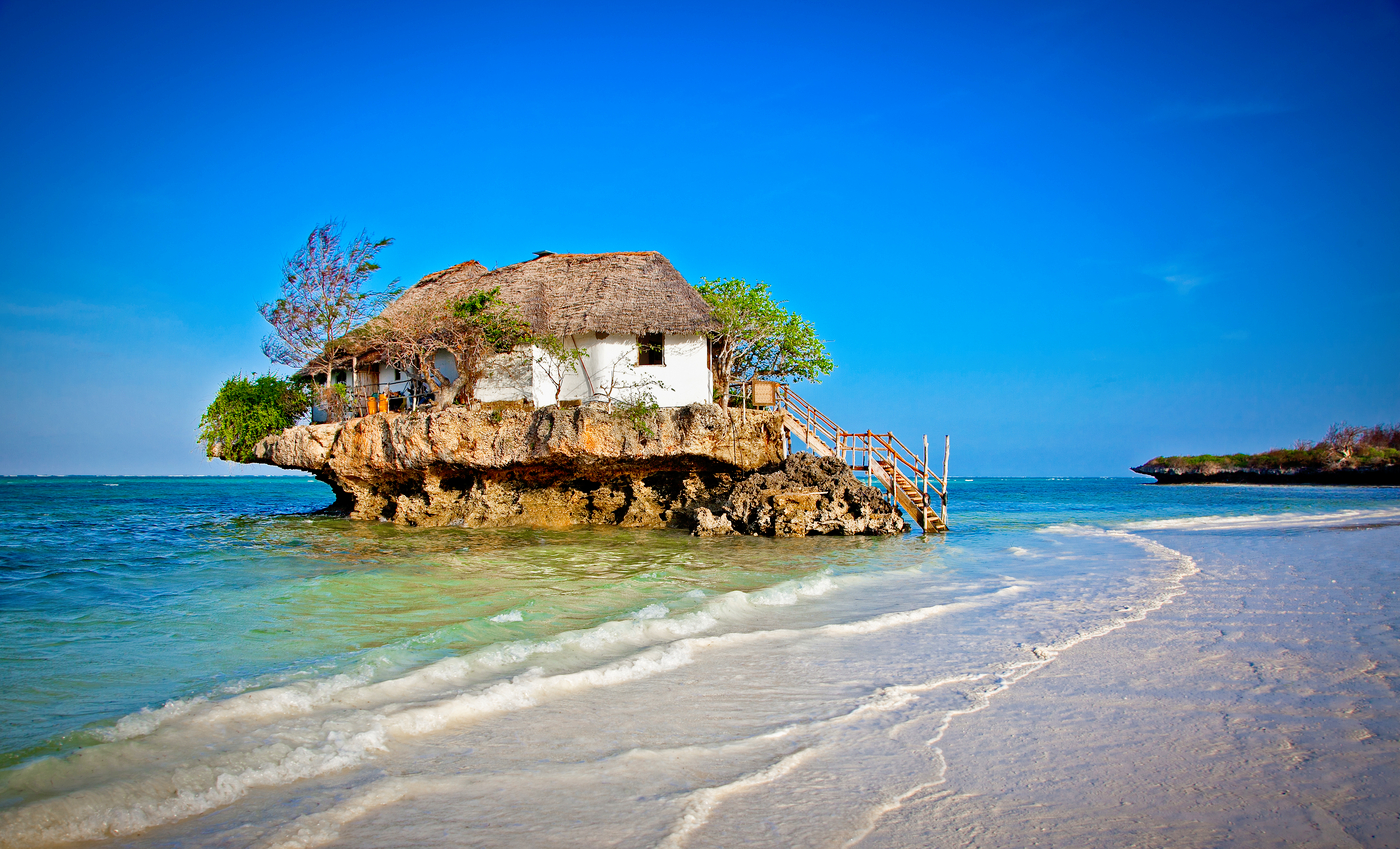


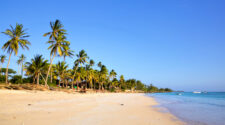


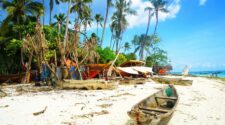
Going to be travelling to Zanzibar in October after our Safari in Kenya.
Looks really good.
Thanks for the info.